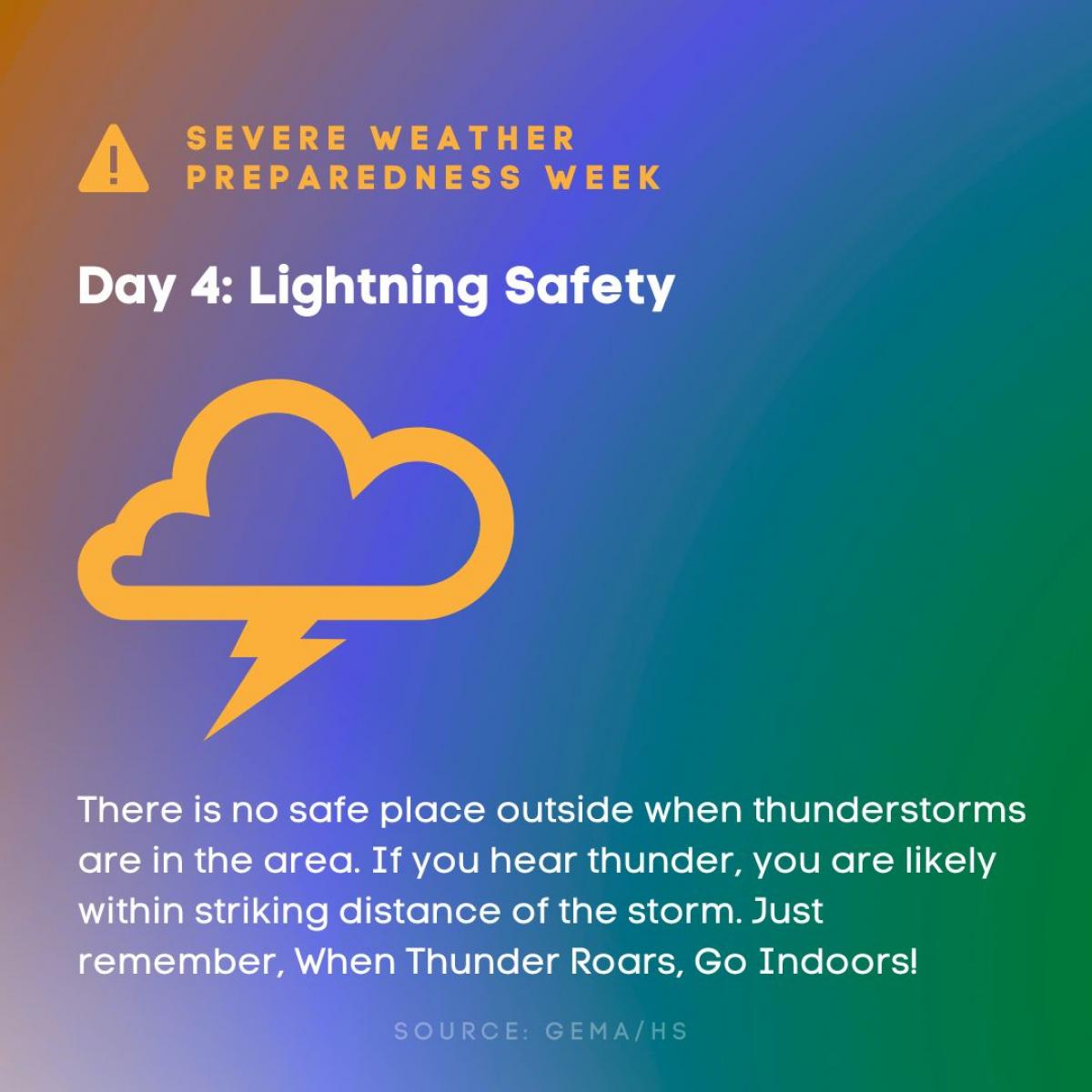Day 4: Lightning Safety

Lightning is one of the most underrated severe weather hazards, yet ranks as one of the top weather killers in the United States. Lightning strikes in America kill about 50 people and injure hundreds of others each year.
Unlike other weather hazards that often involve sophisticated watches and warnings from NOAA’s National Weather Service, lightning can occur anywhere there is a thunderstorm. That’s why the National Weather Service conducts an on-going campaign to educate people about lightning risks.
The Shocking Truth
Lightning is a rapid discharge of electrical energy in the atmosphere. The resulting clap of thunder is the result of a shock wave created by the rapid heating and cooling of the air in the lightning channel.
During a thunderstorm, winds within the thunder- storm cloud cause collision between the various precipitation particles within the storm cloud. These collisions cause very small ice crystals to lose electrons while larger particles of soft hail gain electrons.
Upward winds within the cloud redistribute these particles and the charges they carry. The soft hail causes a negative charge build up near the middle and lower part of the storm cloud which, in turn, causes a positive charge to build up on the ground beneath the storm cloud.
Eventually, when the charge difference between the negative charge in the cloud and the positive charge on the ground become large, the negative charge starts moving toward the ground. As it moves, it creates a conductive path toward the ground.
This path follows a zigzag shape as the negative charge jumps through segments in the air. When the negative charge from the cloud makes a connection with the positive charge on the ground, current surges through the jagged path, creating a visible flash of lightning.
Thunder, high winds, darkening skies, rainfall and brilliant flashes of light are warning signs for lightning strikes.
While most lightning casualties occur at the beginning of an approaching storm, a significant number of lightning deaths occur after the thunderstorm has passed. If thunder is heard, then the storm is close enough for a lightning strike. It is very important to seek safe shelter immediately.
When Thunder Roars, Go Indoors
When you hear thunder or see lightning, you should immediately seek safe shelter — a building with electricity and/or plumbing or a metal-topped vehicle with the windows closed. Picnic shelters, dugouts, small buildings without plumbing or electricity are not safe. Once inside, follow these important safety tips:
- Stay off corded phones. You can use cellular or cord less phones.
- Don't touch electrical equipment or cords.
- Avoid plumbing. Do not wash your hands, take a shower or wash dishes.
- Stay away from windows and doors, and stay off porches.
- Do not lie on concrete floors or lean against concrete walls.
Nowhere outside is safe when thunderstorms are in the area. Run to a safe building or vehicle when you first hear thunder, see lightning or observe dark threatening clouds developing overhead. Stay inside until 30 minutes after you hear the last clap of thunder.
Organizers of outdoor events should monitor the weather and evacuate participants as soon as they hear thunder. It’s a good idea to post lightning safety rules in programs, flyers or signs so participants know what to do. Most importantly, keep an eye on the sky, listen for thunder, and keep up to date with the latest NWS forecasts.
Source: NOAA
